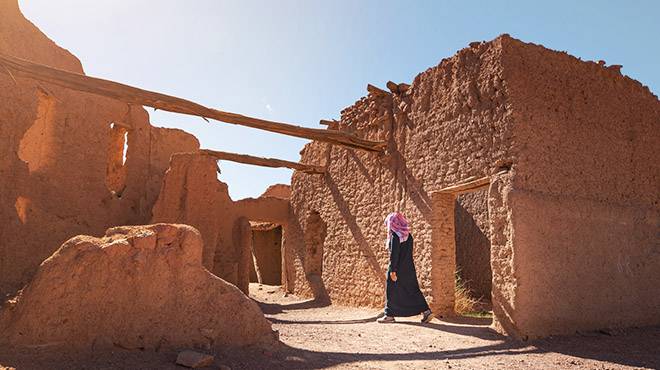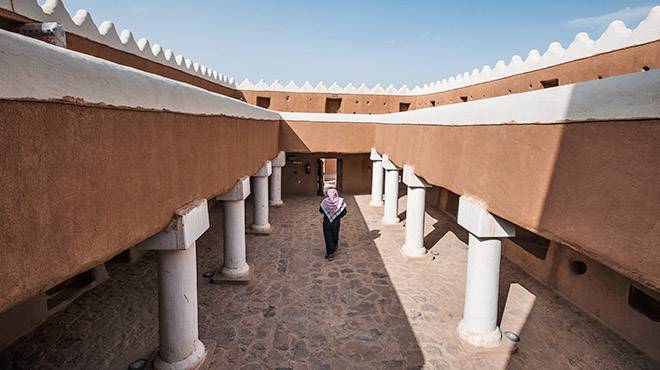Shammar Mountains - Peaks of Aja and Salma
In the northwest of Saudi Arabia's Hail Province, there are now two peaks in the Shammar Mountains called Aja and Salma. The names of these two peaks originate from a tragic ancient love story. According to different versions of the story, Aja and Salma came from different tribes, and their love was opposed. Eventually, they chose to elope but were ultimately murdered. Despite this, their love was celebrated for a long time. It is said that the peaks moved for their love. Locals still tell this story today, believing that the story of the two happened nearby, and the two mountain ranges continue to draw closer because of the power of love.
Home of the Legendary Arab Hatim Al Tai
Hatim Al Tai was a 6th-century Arab poet from the 'Tai' tribe, which was quite large at the time. Due to his generosity, he became a respected idol in the region. His deeds are even mentioned in the famous 'One Thousand and One Nights' stories, as well as in many poems, movies, and TV series. On the northwest slope of Aja Peak, visitors can tour his well-preserved palace home. There is also a small cemetery there, which is said to be Hatim's burial place.
A Taste of the Royal History of Hail Region
The three castles in Hail Province are the focal points of exploration in the city center. The oldest structure is the 17th-century A'arif Fort, originally built by the Ali family and later expanded by the Al-Rashid family. This castle is situated on a hilltop, offering panoramic views of the city from various angles. During the Saudi Arabian government's jurisdiction, the castle was used as a venue for local festive activities, for moon sighting during Ramadan, and for celebrating the end of daily fasting with Eid cannons fired from the high ground. The second oldest is Barzan Castle, built in the 19th century, which once covered an area of 300,000 square meters. Unfortunately, most of the structure was destroyed in 1921, leaving only the towers as historical relics in the city center for visitors to admire. Relatively newer is the Al-Qishlah Castle, built in the 1940s. It was initially used for territorial defense and later turned into a local prison. With the establishment of the Saudi government, this castle has been transformed into a historical building open for public visits.









